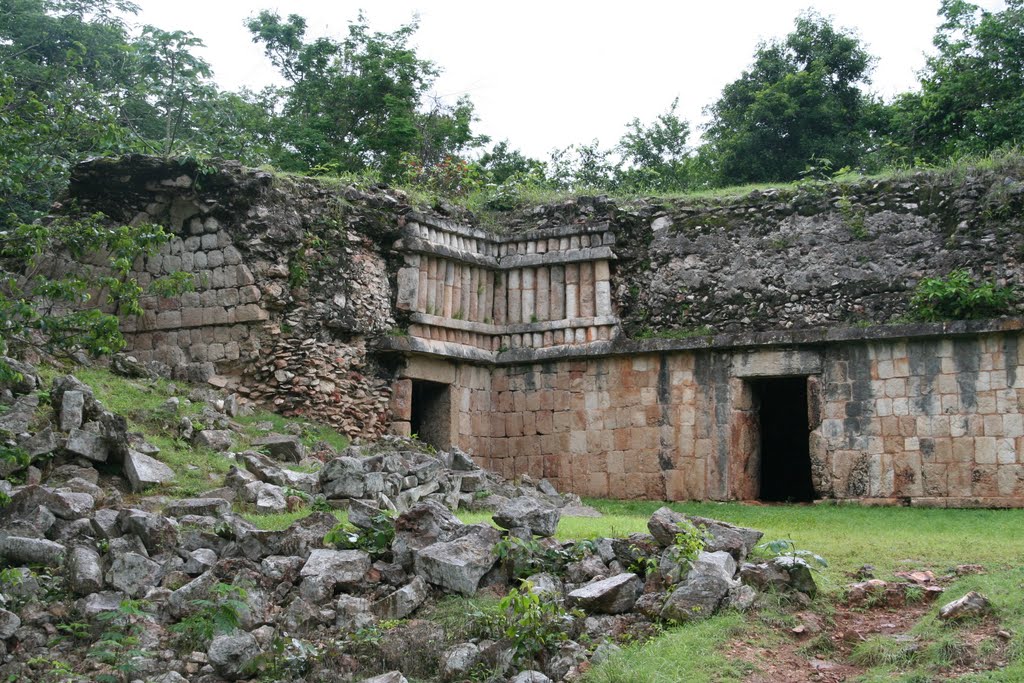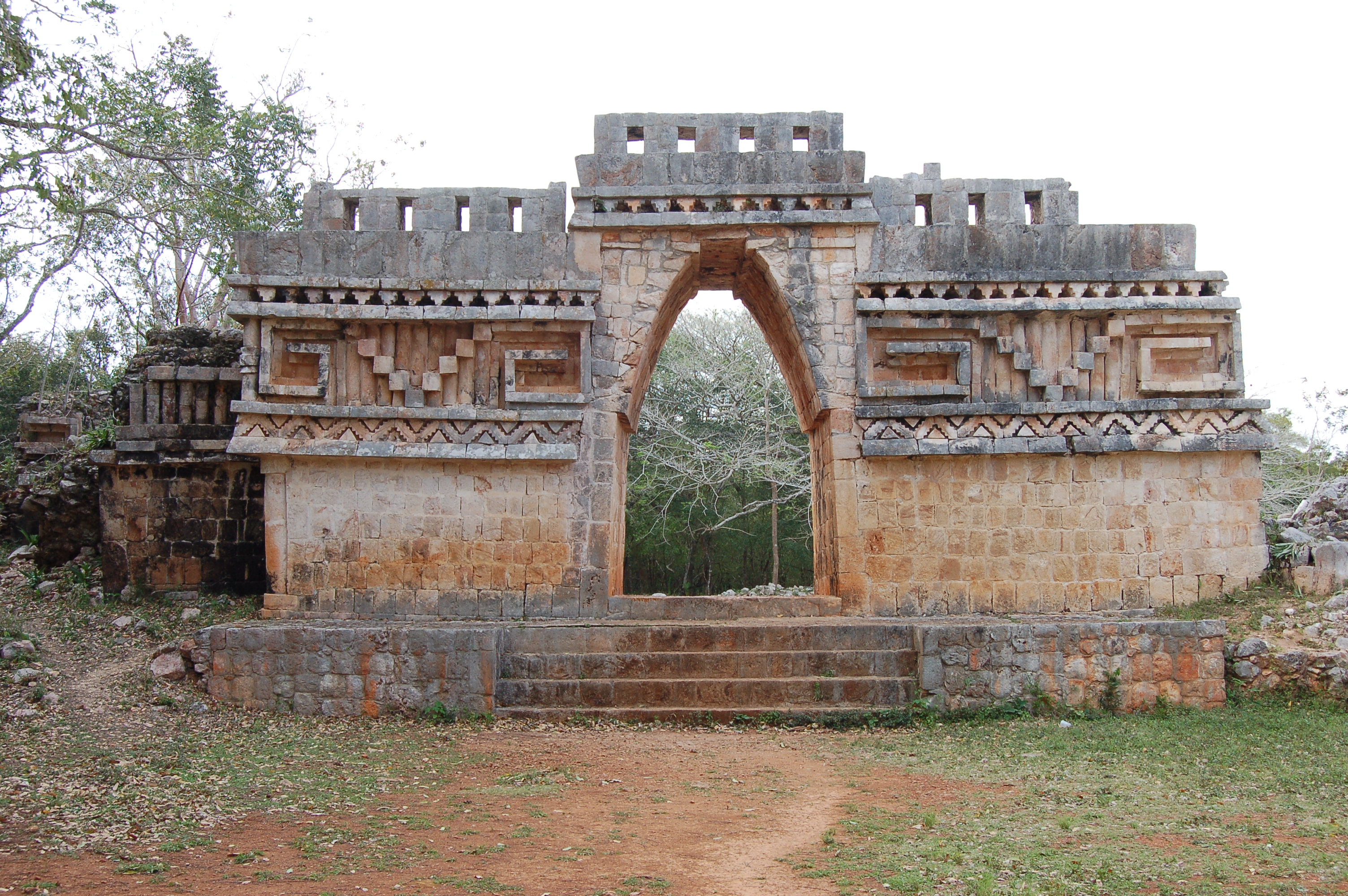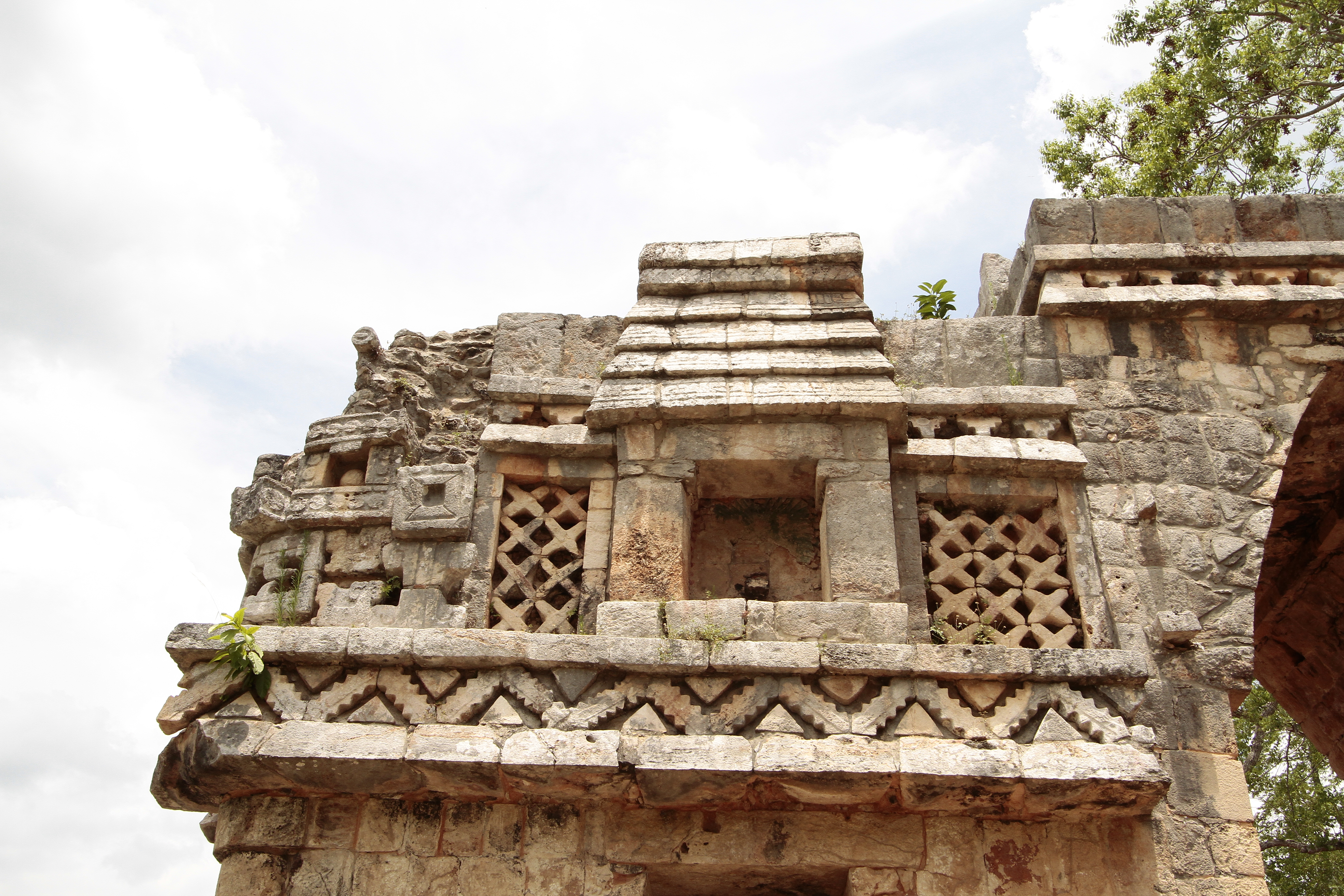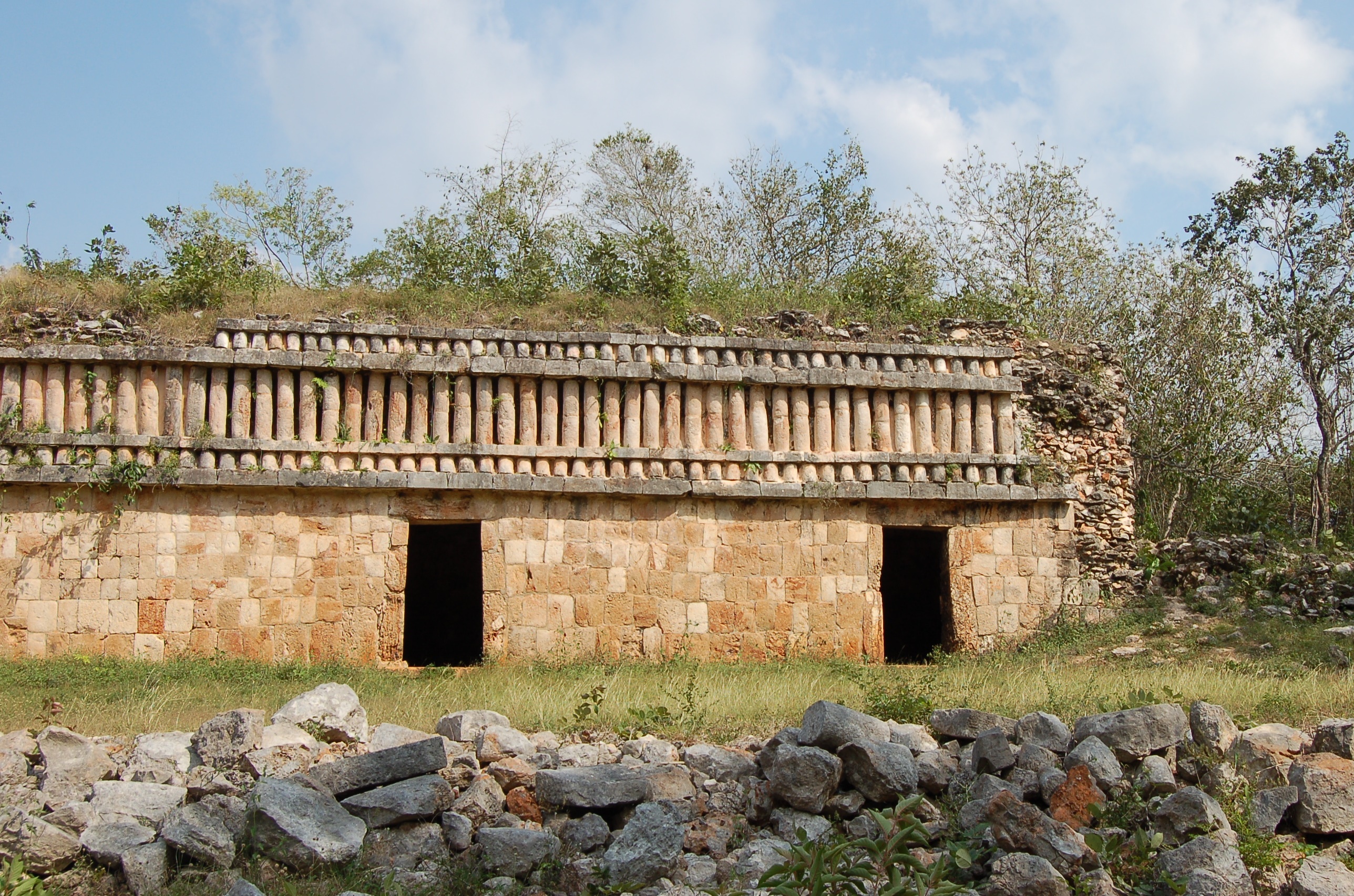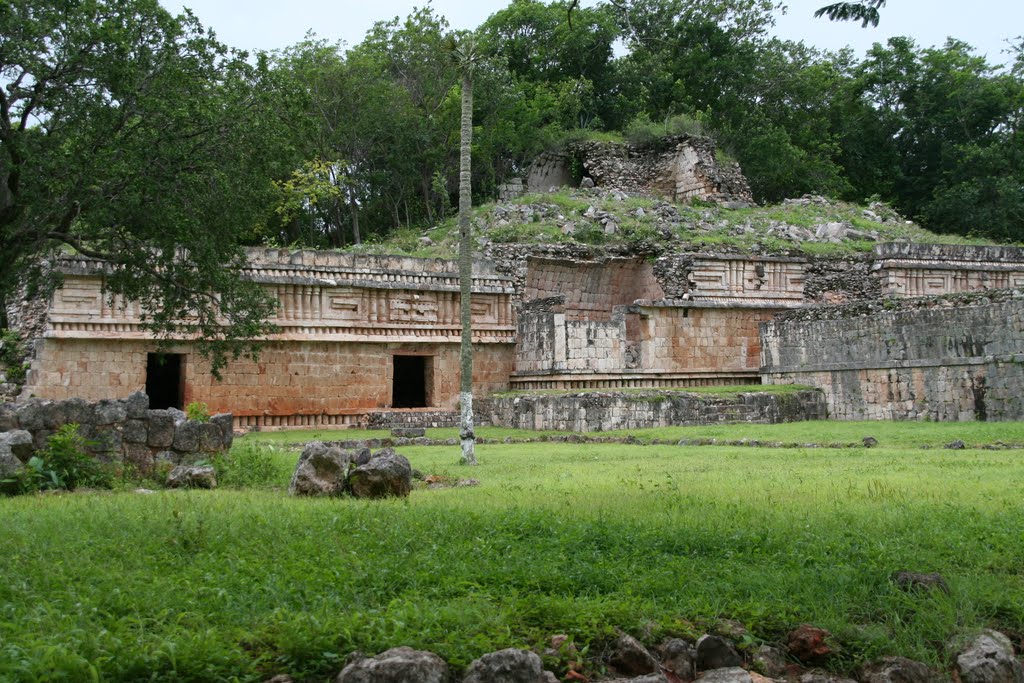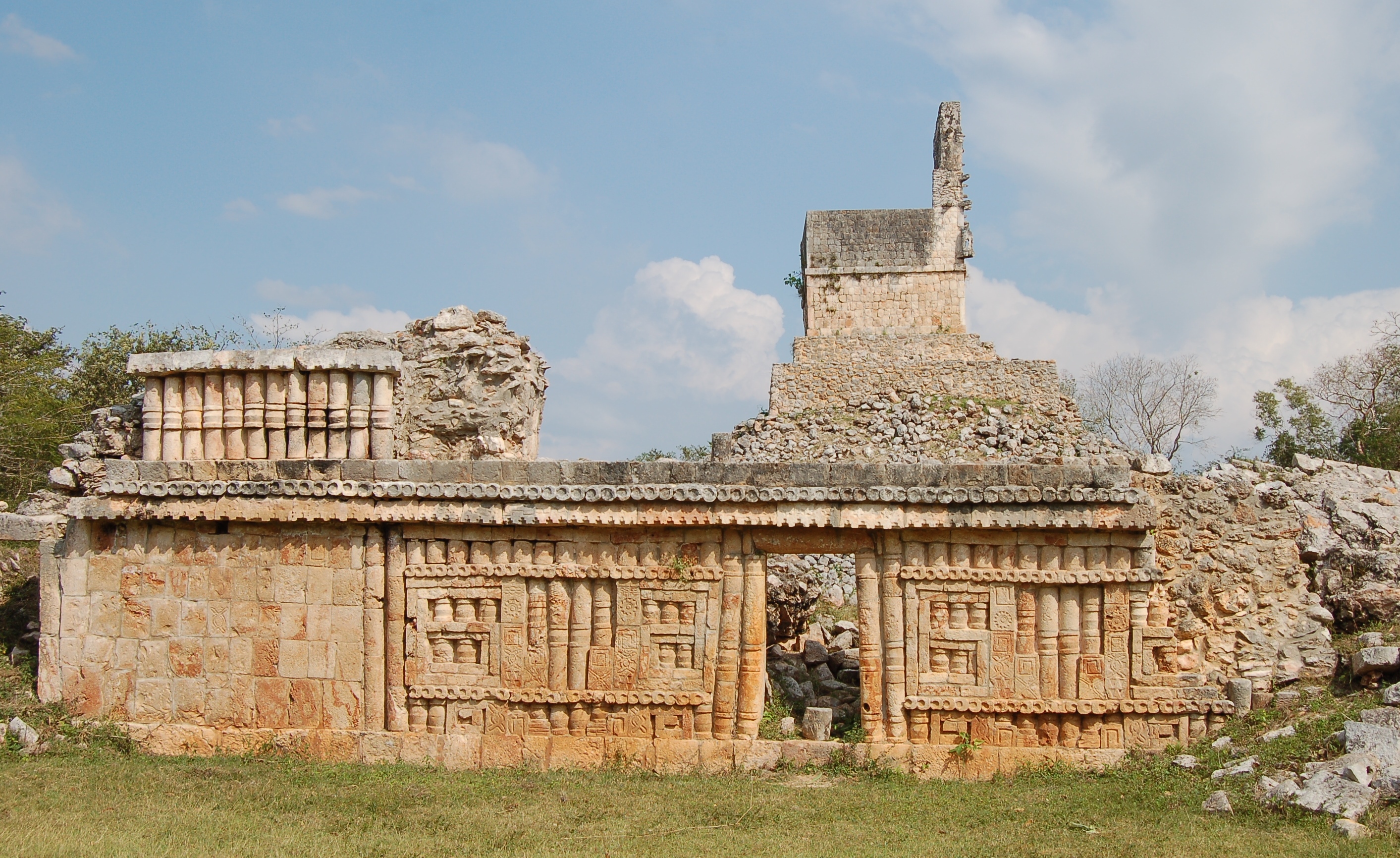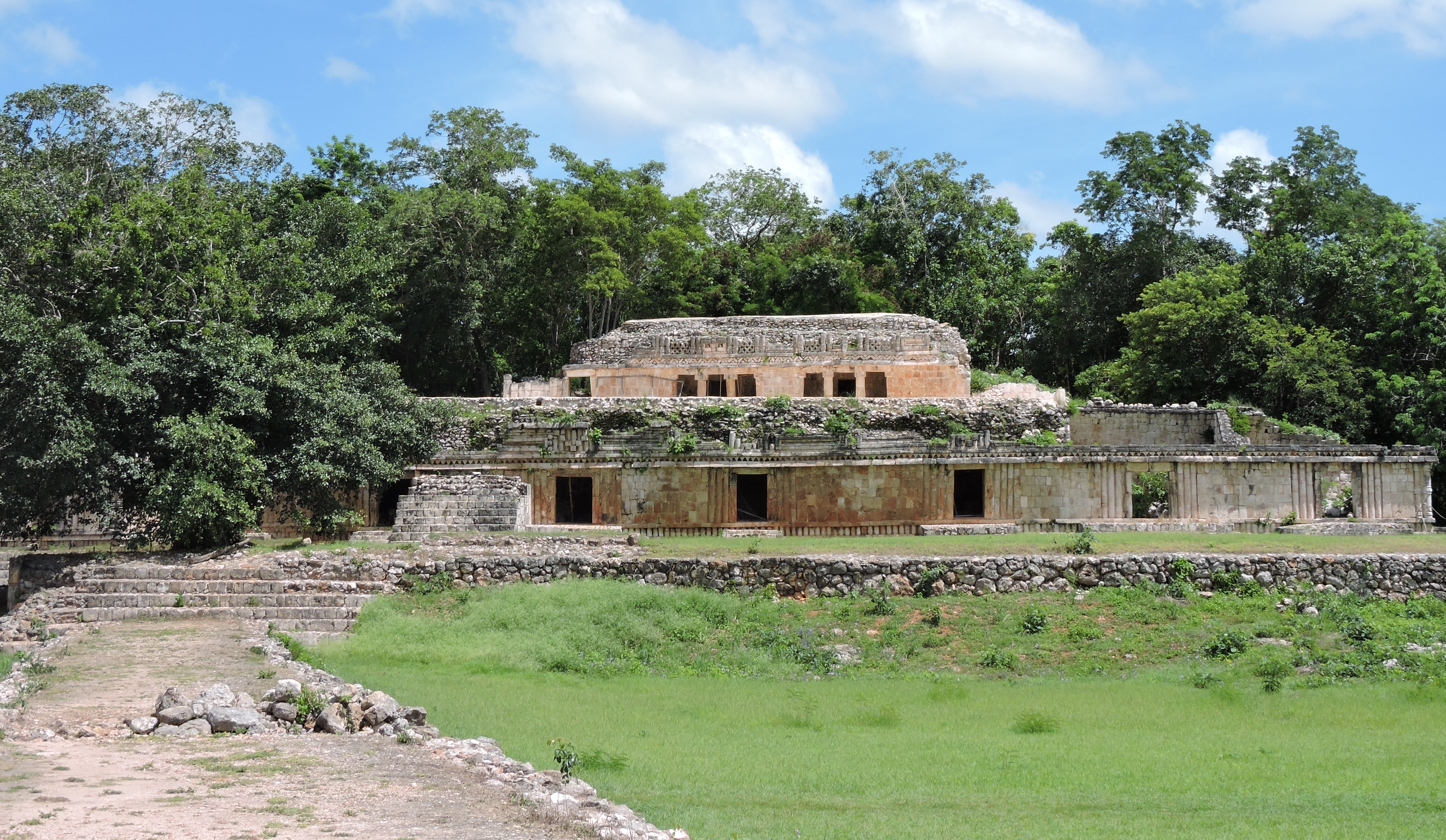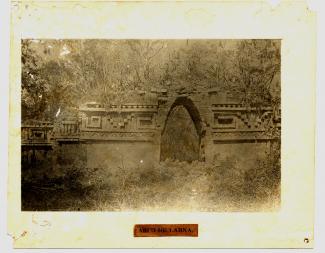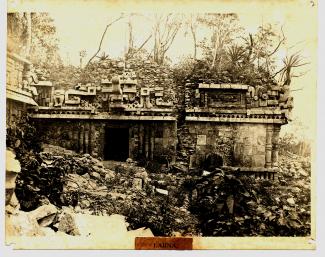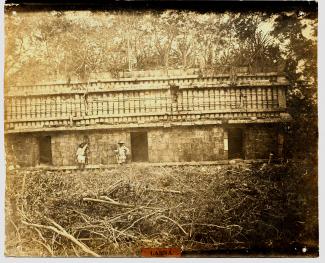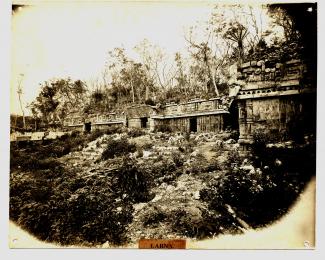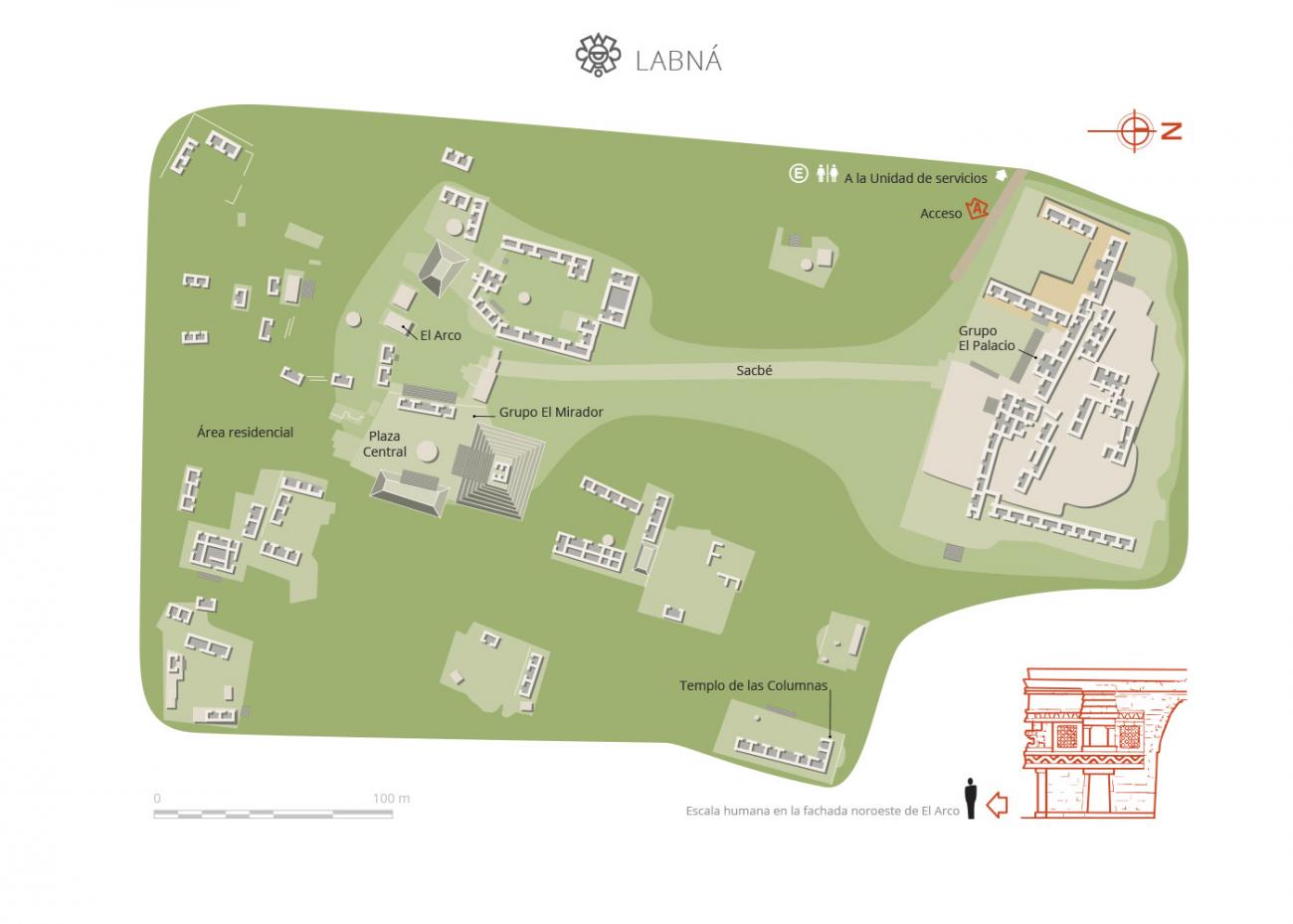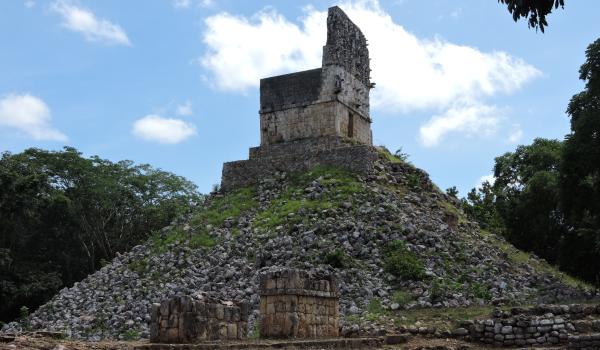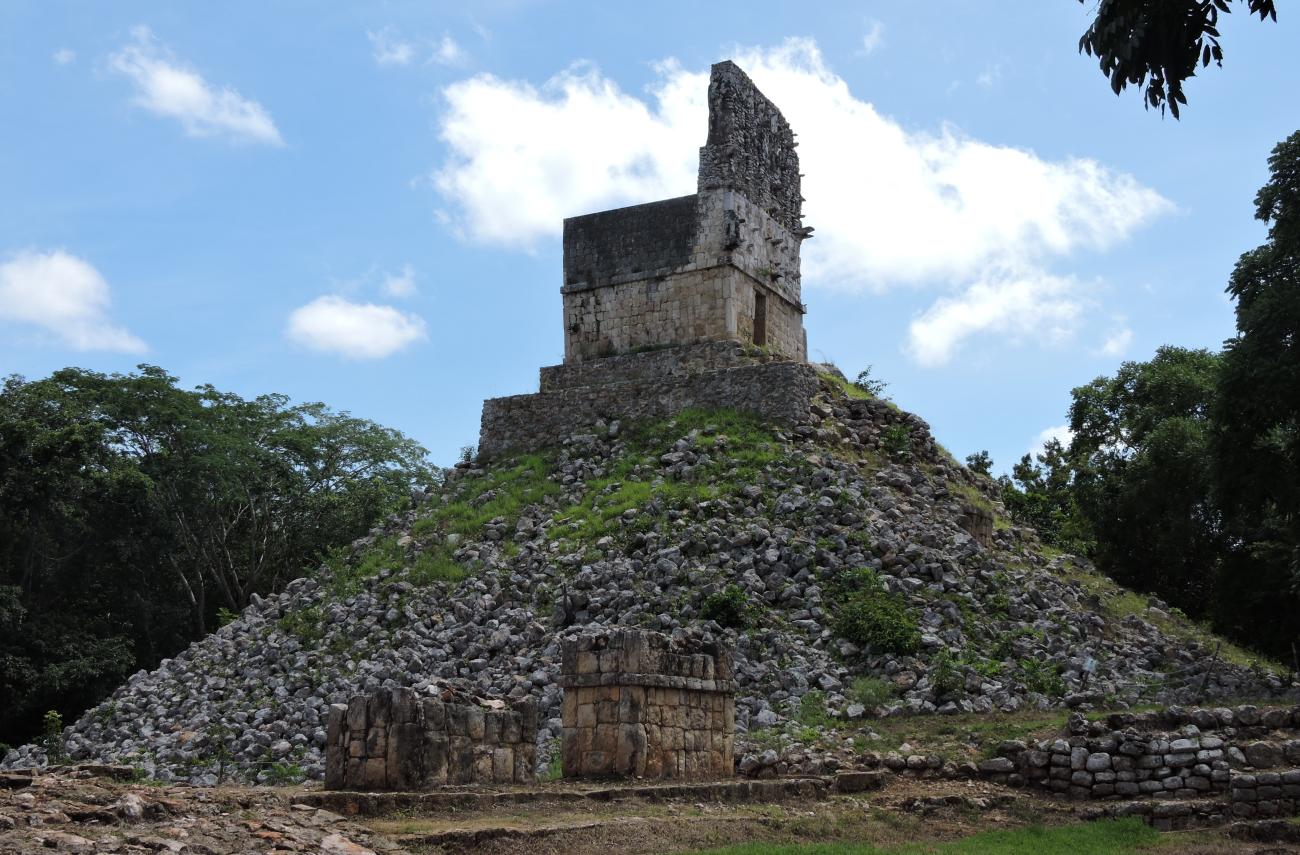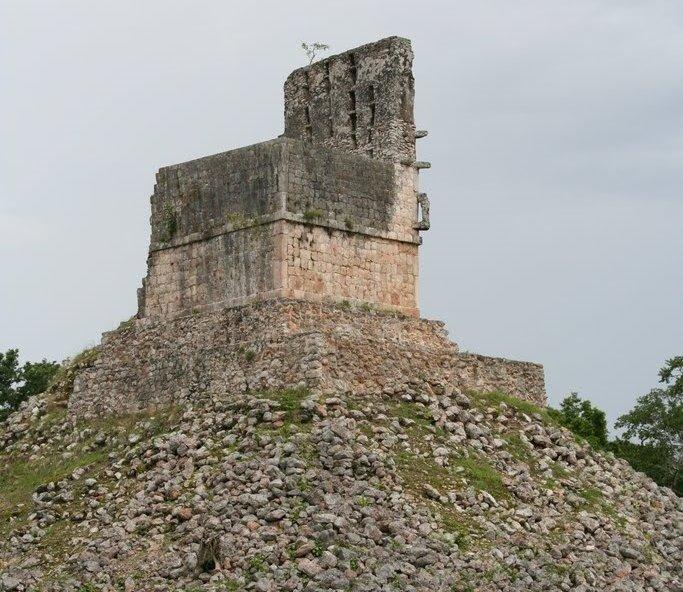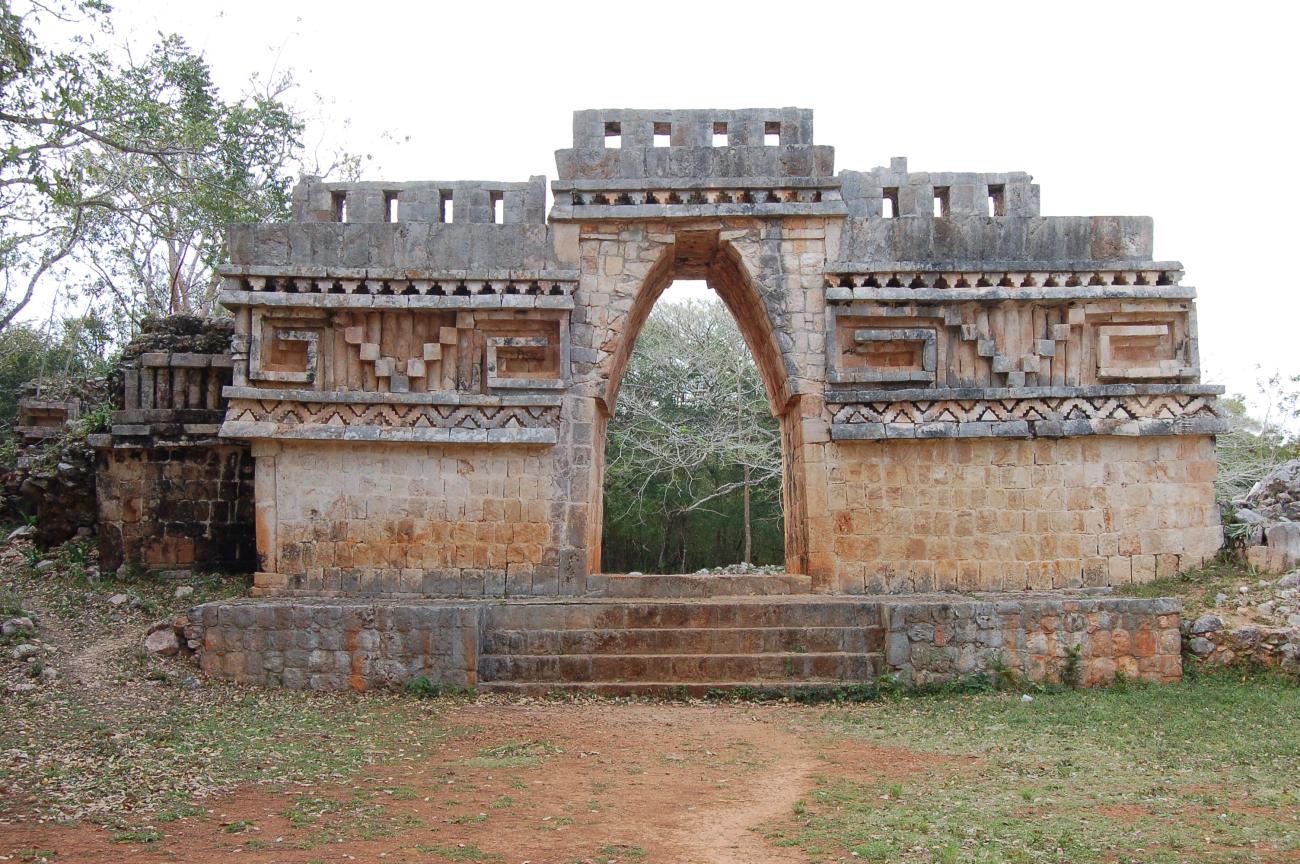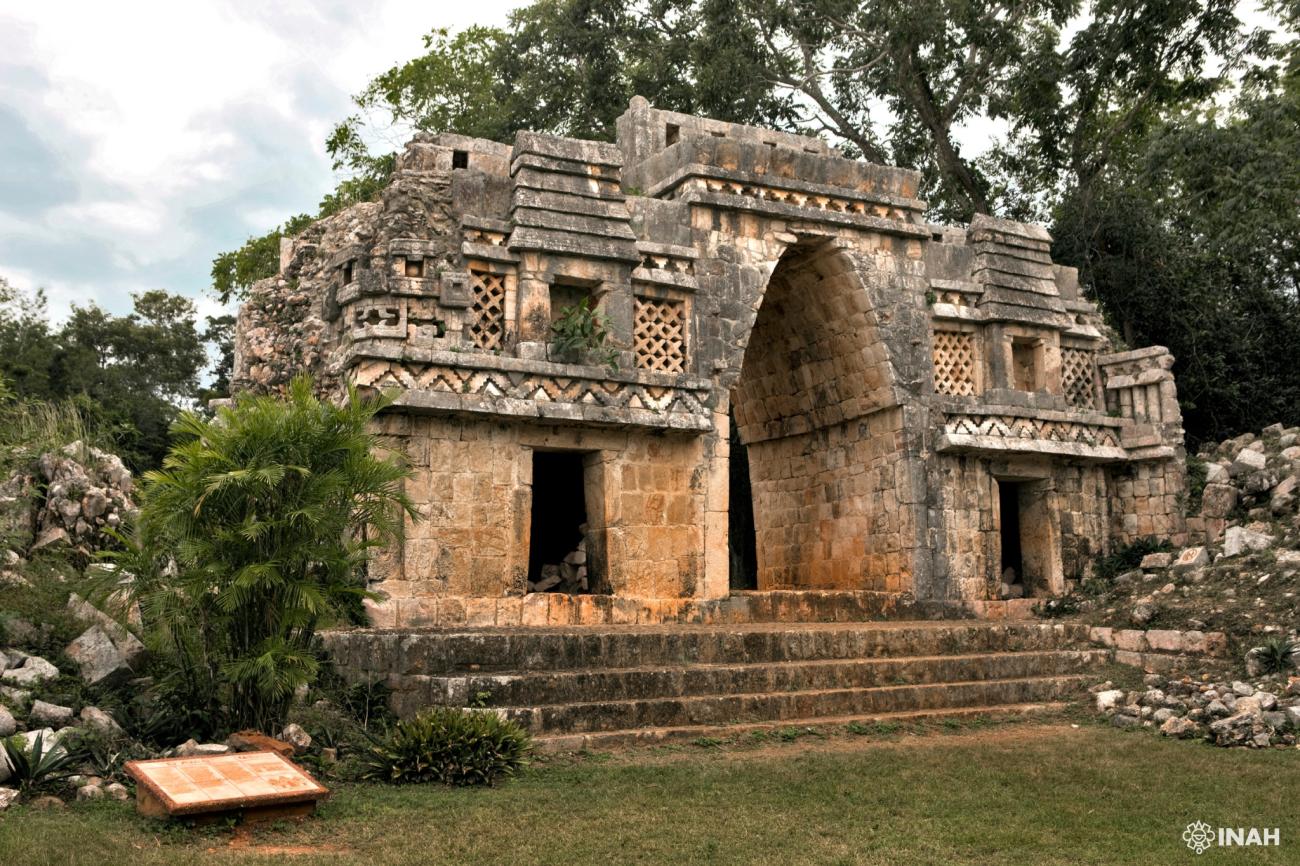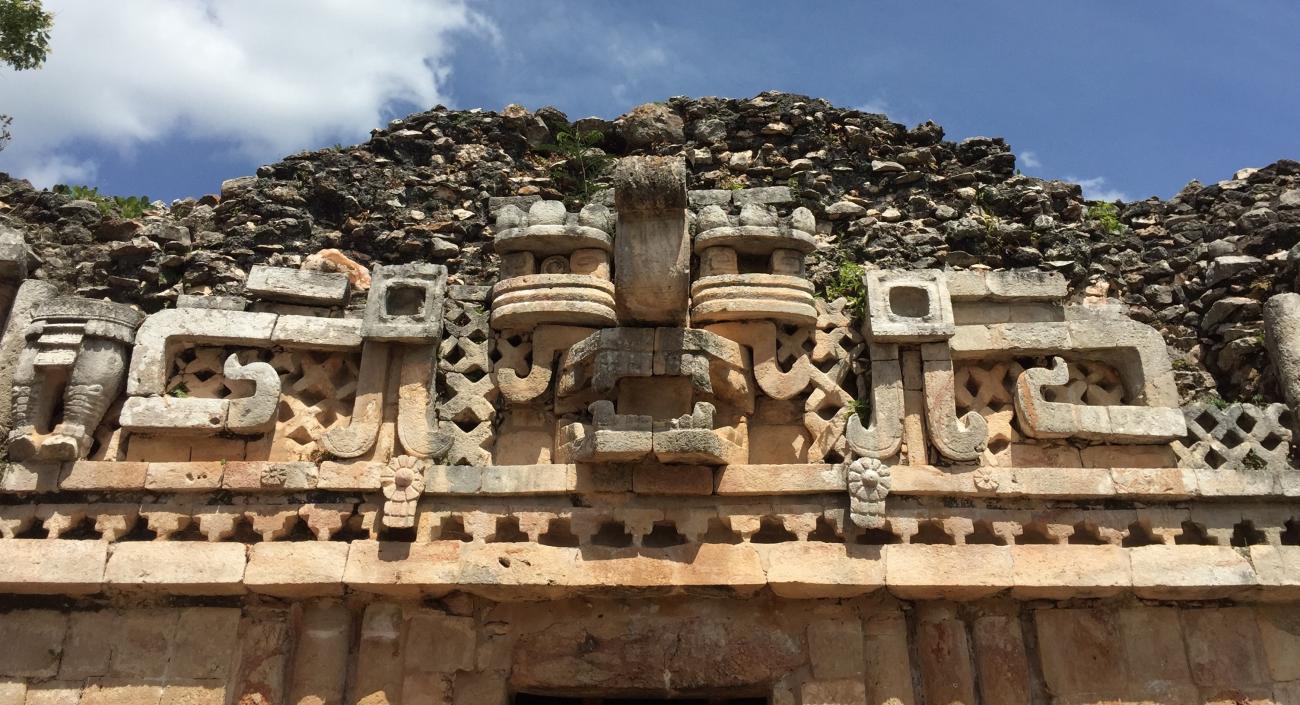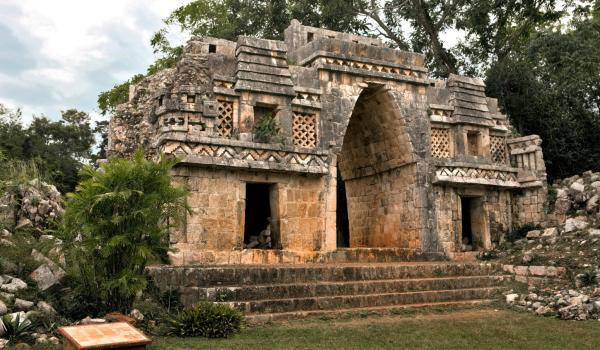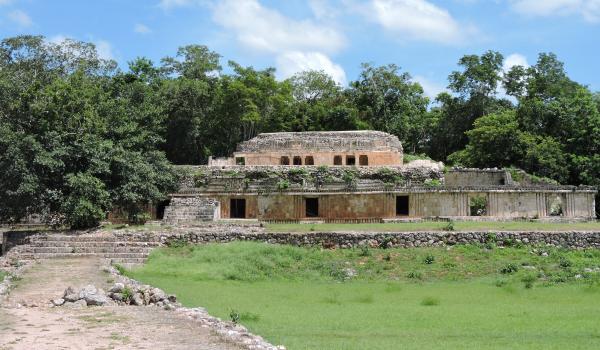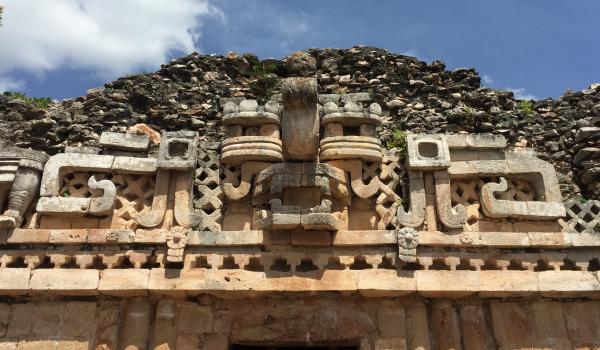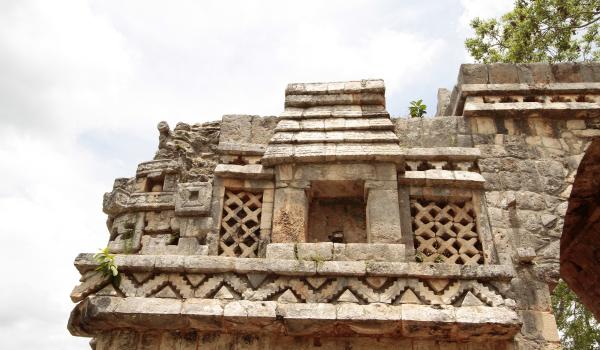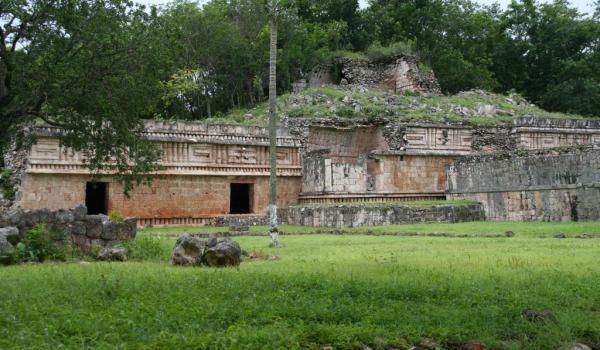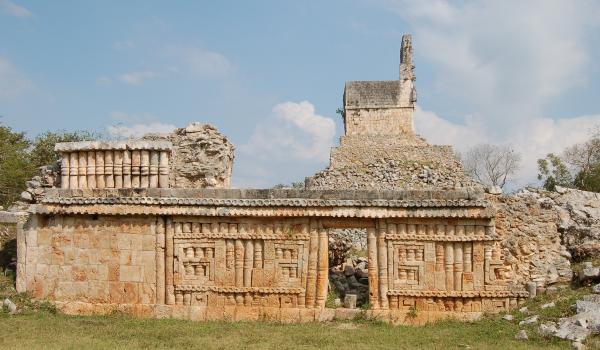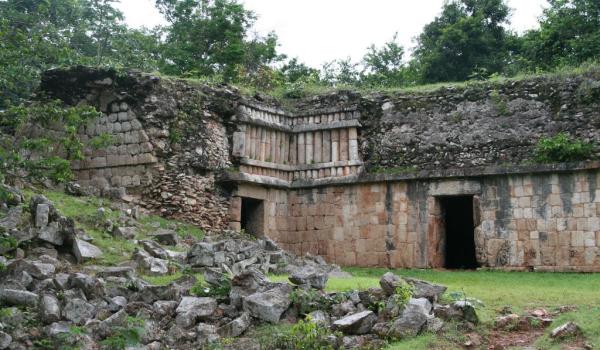Labná was a medium-sized sister city of Oxkintok and Nohpat, probably owing its allegiance to a regional capital of the Puuc region, possibly to Uxmal, Sayil or Kabah. Nevertheless the city had extraordinarily elaborate architecture which is largely still preserved. The site was populated from 200 BC, reaching its apogee between 800 and 1000 AD. Labná undoubtedly had a complex social structure and its style and decorative elements are similar to other cities of the region. In 1842 the US explorer John Lloyd Stephens and the English architect and photographer Frederick Catherwood visited the area, the latter taking some valuable images of the monuments of the ancient city.
At Labná, the profusely decorated ten foot wide by twenty foot high arch is exceptional, as are the monuments known as El Palacio ("The Palace") (two floors, with masks of the god known as "Narigudo"), and El Mirador ("The Lookout"), which is a temple on top of a pyramid. The city extended to 1.4 square miles and was home to a population of 3,000. It is listed as a World Heritage Site, under the collective title of the “Pre-Hispanic Town of Uxmal.”



